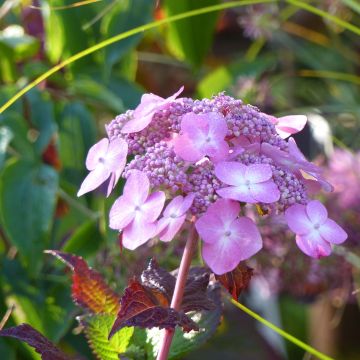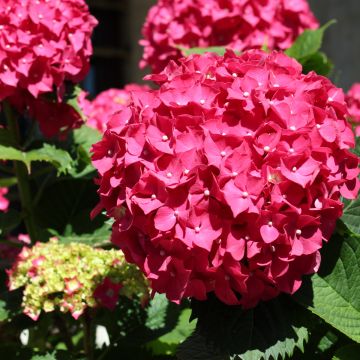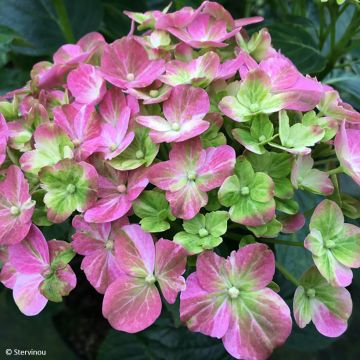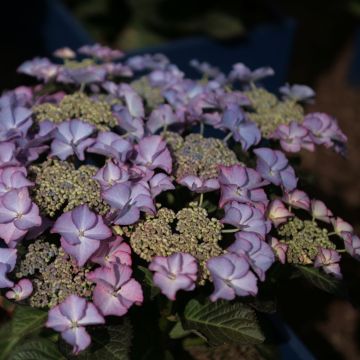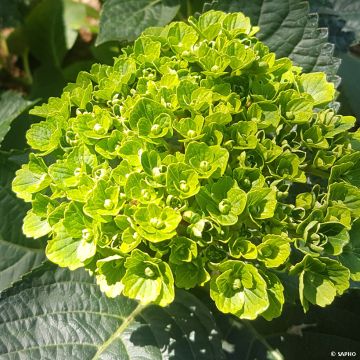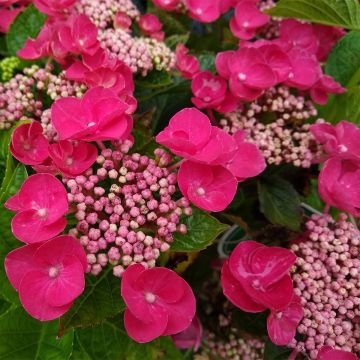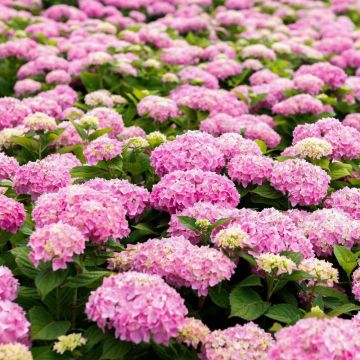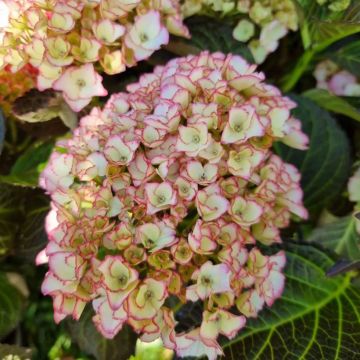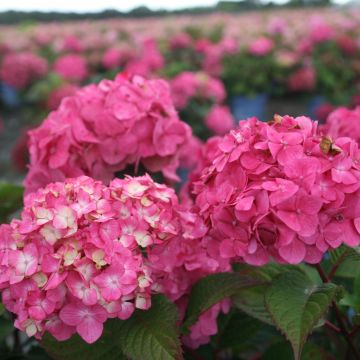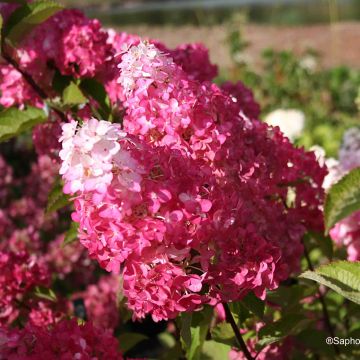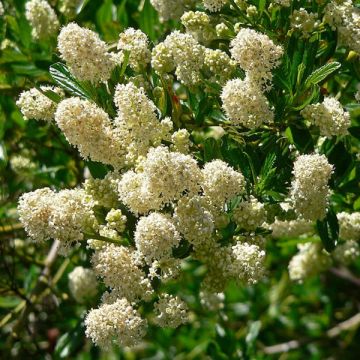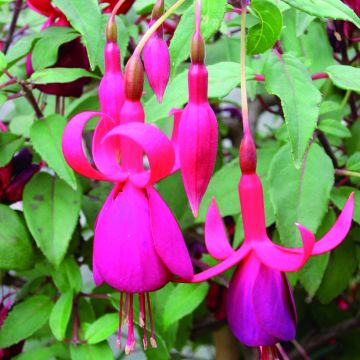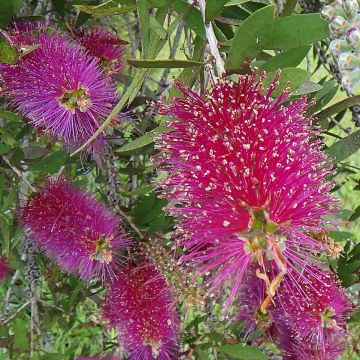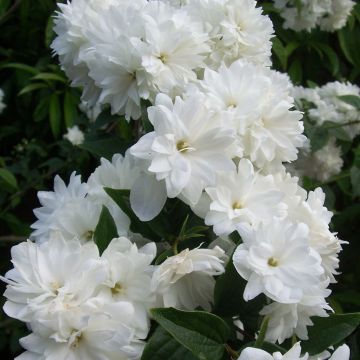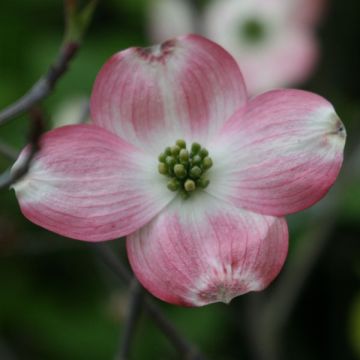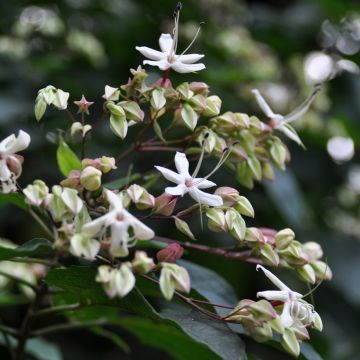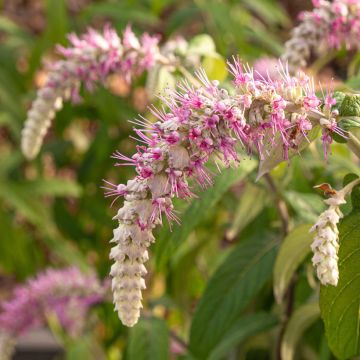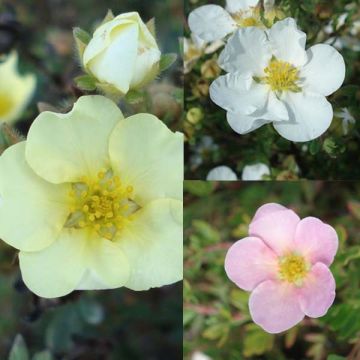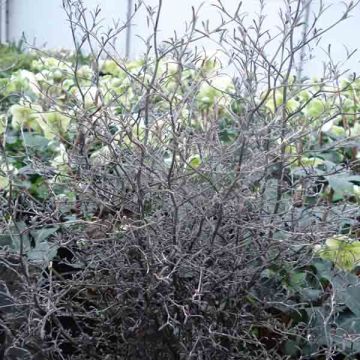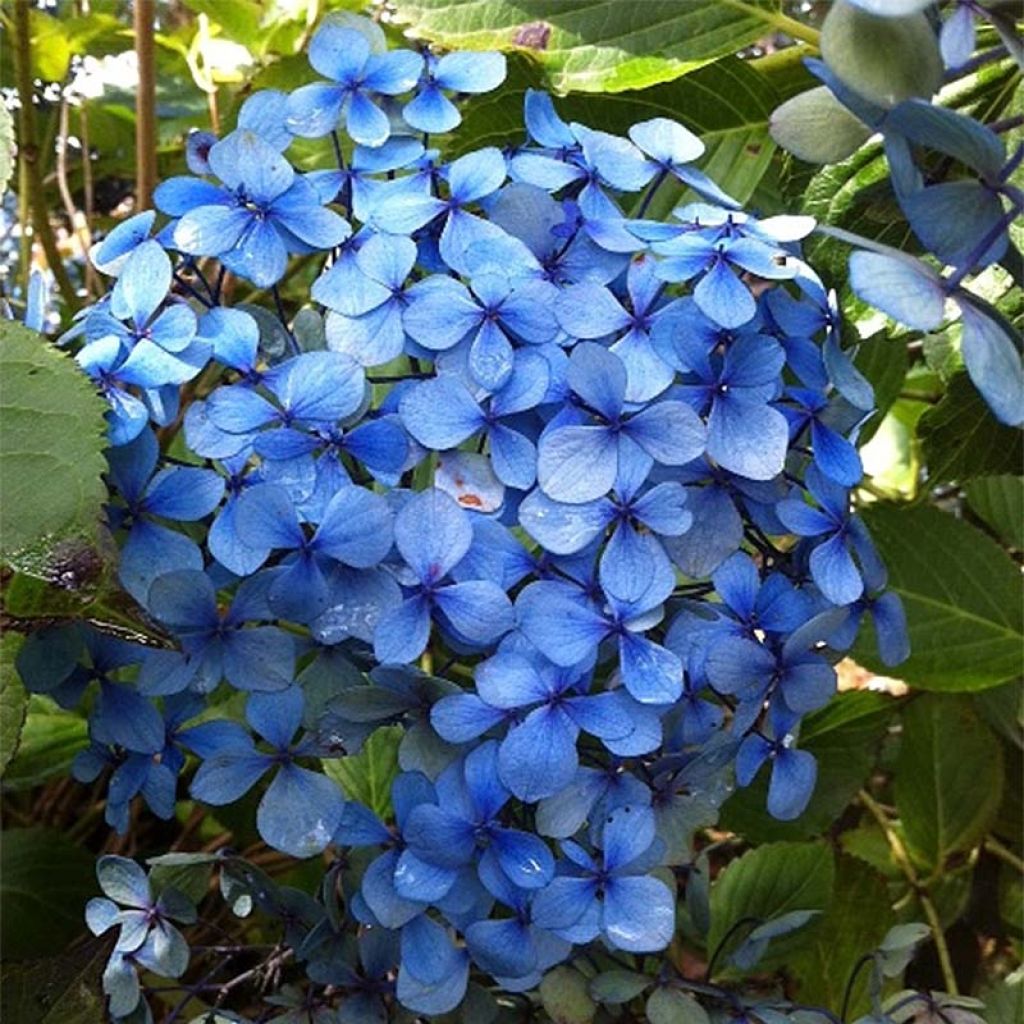

Hydrangea macrophylla Yamato
Hydrangea macrophylla Yamato
Hydrangea macrophylla Yamato (Telenn)
Bigleaf Hydrangea, French Hydrangea
a real joy, my whole order is top www.chezpiaetalain.co.uk and all these young plants enhance our garden which has a good number of rare plants and ones that are out of the ordinary
Le Jardin chez Pia et Alain , 08/06/2021
This item cannot be shipped to the selected country
Delivery charge from €5.90
More information
Schedule delivery date,
and select date in basket
This plant carries a 24 months recovery warranty
More information
We guarantee the quality of our plants for a full growing cycle, and will replace at our expense any plant that fails to recover under normal climatic and planting conditions.
From €5.90 for pickup delivery and €6.90 for home delivery
Express home delivery from €8.90.

Does this plant fit my garden?
Set up your Plantfit profile →
Description
The Hydrangea macrophylla Yamato, more commonly known as 'Telenn', is a variety infrequently offered for sale. It is appreciated for the lightness of its sizeable globular flower heads, which are compound flowers similar to four-leaf clovers. Their complex and changing colour is a beautiful gradient of blue in acidic soil or pink in neutral to slightly chalky garden soil. Its leaves take on fantastic colours in autumn, which is rare in this category of hydrangeas. The bush eventually forms a very flowery vegetal dome from July to September. This hardy variety, accessible to all gardeners, deserves a beautiful place on the curve of a path, on the edge of the lawn, or near an east-facing facade.
The Hydrangea macrophylla 'Yamato', introduced in 1993, is a beautiful creation of the famous French hydrangea specialist Corinne Mallet. Like all Hydrangea, it belongs to the Hydrangeaceae family, and its ancestor is native to China and Japan. 'Yamato' forms a large bush with a spreading habit, wider than it is tall, reaching approximately 1.50 m (4 ft 11 in) in height and 2 m (6 ft 7 in) in width. From July to September, round-headed flower heads, without heaviness, 15 to 18 cm (5.9 to 7.1 in) wide, appear in large numbers on at least one-year-old wood. These are corymbs composed of sterile flowers with 4 petals well separated from each other. In acidic soil, these flowers display a blue colour of varying intensity, from bluish-white to cobalt blue and bluish-grey. However, in neutral to slightly chalky soil, the flowers will show various shades of pink, from pinkish white to fresh pink and purplish pink, all these shades mixing on the flower head and across the bush. The flowering spreads over a large, shiny foliage, rounded, dark green, and dentate, which turns red in autumn before falling. The leaves are opposite; they reach at least fifteen centimetres in length. They are single, ovate to elliptical, ending in a pointed tip, coarsely serrated. Hydrangeas can live at least 50 years.
The Yamato Hydrangea will delight hydrangea lovers who have retained the charm of wild plants. In blue or pink, its flowers also seduce with their refinement. Hydrangeas are well known for brightening the north side of houses. This one will thrive in an east or west exposure that is not scorching, in beds and hedges. This variety deserves to be highlighted at the edge of the short grass meadow in front of taller bushes or near the house. The Hydrangea macrophylla Tricolour, with its variegated foliage of great delicacy, would make a good companion for this Yamato hydrangea. Even if hydrangeas are not fond of limestone, they are not strictly ericaceous plants; they adapt to any good garden soil poor in limestone. Pair them with Japanese maples, ferns, Japanese anemones, lilies, foxgloves, annual impatiens, or plant spring-flowering bulbs in front of their round silhouette. Enjoy their sumptuous flowering in the garden or house for a long time.
It's important not to prune too early! Let the dried flower heads remain on the plant, and only cut them after the spring frosts. These flower heads are effective in protecting new vegetation and future flowers.
Also, remember that the colour of the flowers of Hydrangea macrophylla varies based on the soil's pH level. If you want to maintain a beautiful blue colour, mix ericaceous soil with your garden soil and apply aluminium sulphate (which can be found in slate) or alum stone every year in the spring. Traditionally, blue varieties will turn pink in neutral or alkaline soil.
Report an error about the product description
Hydrangea macrophylla Yamato in pictures
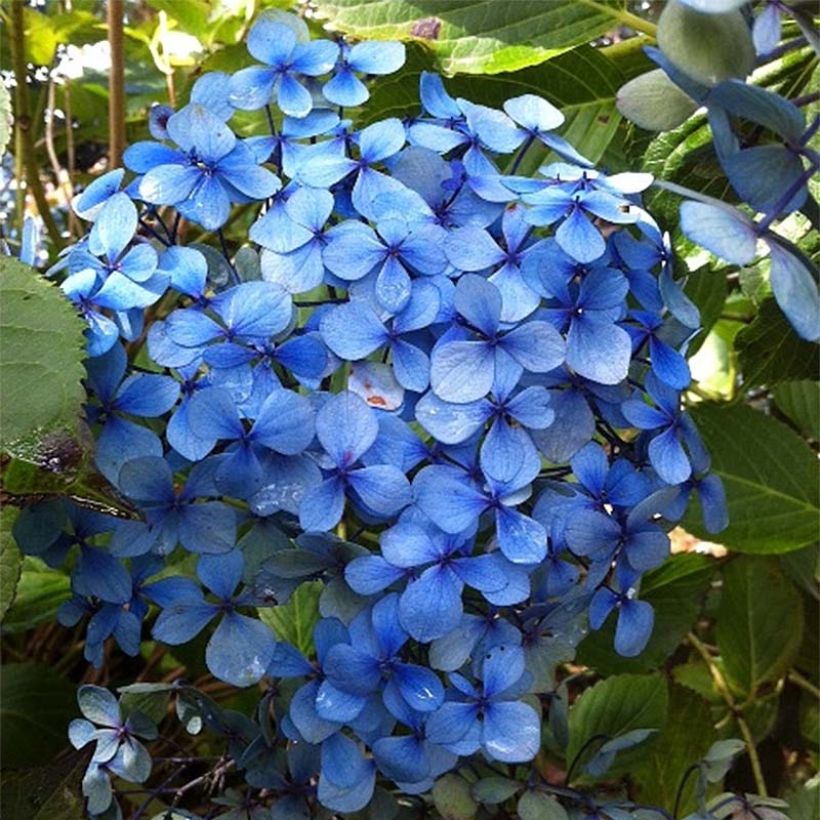

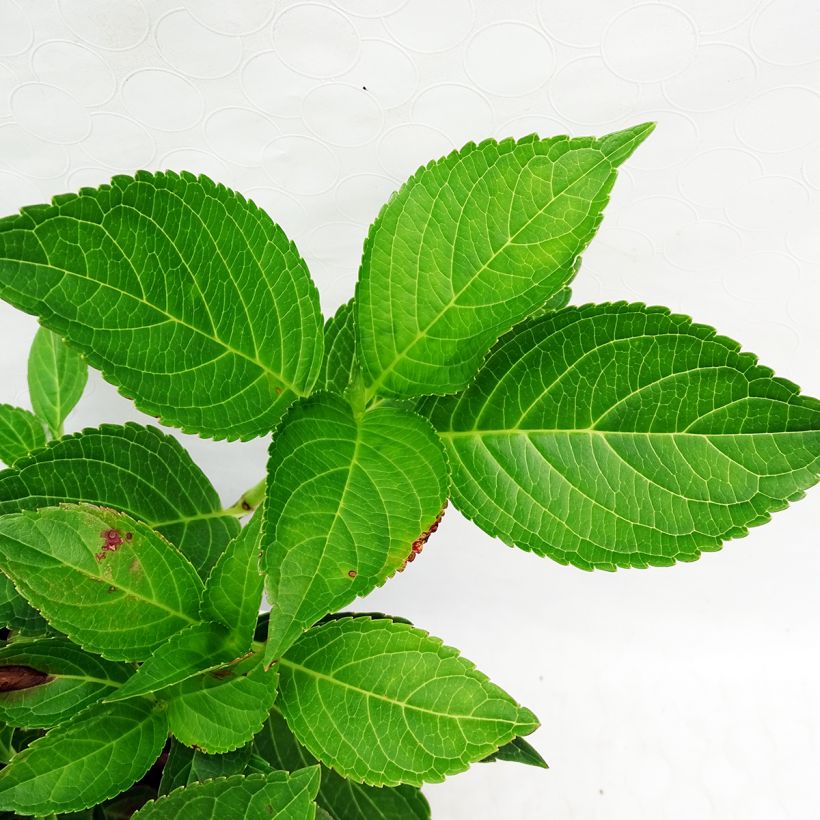

Plant habit
Flowering
Foliage
Botanical data
Hydrangea
macrophylla
Yamato (Telenn)
Hydrangeaceae
Bigleaf Hydrangea, French Hydrangea
Cultivar or hybrid
Other Hydrangea Macrophylla
Planting and care
If you want to plant hydrangea macrophylla Yamato, spring or early autumn is the best time. Choose a spot that gets a bit of shade, like against a wall facing east or north. Protect it from the cold and dry winds. The plant doesn't need ericaceous soil, but it does like deep, well-drained, and reasonably fertile soil. You should add a good base fertiliser and aluminium sulphate to make its blue colour stand out.
If the soil is dry near the wall, plant the root ball at least 30-40 cm (11.8-15.7 in) away from the base and mix in plenty of compost to help keep the soil moist. The plant is hardy and can be planted in cold regions.
Remove faded flowers from the first bud or pair of buds directly below when pruning. Cut back the oldest stems to a quarter or a third at the base when the young plant is mature to encourage new shoots. Do this pruning every year between March and April.
Planting period
Intended location
Care
-
, onOrder confirmed
Reply from on Promesse de fleurs
Summer-flowering shrubs
Haven't found what you were looking for?
Hardiness is the lowest winter temperature a plant can endure without suffering serious damage or even dying. However, hardiness is affected by location (a sheltered area, such as a patio), protection (winter cover) and soil type (hardiness is improved by well-drained soil).

Photo Sharing Terms & Conditions
In order to encourage gardeners to interact and share their experiences, Promesse de fleurs offers various media enabling content to be uploaded onto its Site - in particular via the ‘Photo sharing’ module.
The User agrees to refrain from:
- Posting any content that is illegal, prejudicial, insulting, racist, inciteful to hatred, revisionist, contrary to public decency, that infringes on privacy or on the privacy rights of third parties, in particular the publicity rights of persons and goods, intellectual property rights, or the right to privacy.
- Submitting content on behalf of a third party;
- Impersonate the identity of a third party and/or publish any personal information about a third party;
In general, the User undertakes to refrain from any unethical behaviour.
All Content (in particular text, comments, files, images, photos, videos, creative works, etc.), which may be subject to property or intellectual property rights, image or other private rights, shall remain the property of the User, subject to the limited rights granted by the terms of the licence granted by Promesse de fleurs as stated below. Users are at liberty to publish or not to publish such Content on the Site, notably via the ‘Photo Sharing’ facility, and accept that this Content shall be made public and freely accessible, notably on the Internet.
Users further acknowledge, undertake to have ,and guarantee that they hold all necessary rights and permissions to publish such material on the Site, in particular with regard to the legislation in force pertaining to any privacy, property, intellectual property, image, or contractual rights, or rights of any other nature. By publishing such Content on the Site, Users acknowledge accepting full liability as publishers of the Content within the meaning of the law, and grant Promesse de fleurs, free of charge, an inclusive, worldwide licence for the said Content for the entire duration of its publication, including all reproduction, representation, up/downloading, displaying, performing, transmission, and storage rights.
Users also grant permission for their name to be linked to the Content and accept that this link may not always be made available.
By engaging in posting material, Users consent to their Content becoming automatically accessible on the Internet, in particular on other sites and/or blogs and/or web pages of the Promesse de fleurs site, including in particular social pages and the Promesse de fleurs catalogue.
Users may secure the removal of entrusted content free of charge by issuing a simple request via our contact form.
The flowering period indicated on our website applies to countries and regions located in USDA zone 8 (France, the United Kingdom, Ireland, the Netherlands, etc.)
It will vary according to where you live:
- In zones 9 to 10 (Italy, Spain, Greece, etc.), flowering will occur about 2 to 4 weeks earlier.
- In zones 6 to 7 (Germany, Poland, Slovenia, and lower mountainous regions), flowering will be delayed by 2 to 3 weeks.
- In zone 5 (Central Europe, Scandinavia), blooming will be delayed by 3 to 5 weeks.
In temperate climates, pruning of spring-flowering shrubs (forsythia, spireas, etc.) should be done just after flowering.
Pruning of summer-flowering shrubs (Indian Lilac, Perovskia, etc.) can be done in winter or spring.
In cold regions as well as with frost-sensitive plants, avoid pruning too early when severe frosts may still occur.
The planting period indicated on our website applies to countries and regions located in USDA zone 8 (France, United Kingdom, Ireland, Netherlands).
It will vary according to where you live:
- In Mediterranean zones (Marseille, Madrid, Milan, etc.), autumn and winter are the best planting periods.
- In continental zones (Strasbourg, Munich, Vienna, etc.), delay planting by 2 to 3 weeks in spring and bring it forward by 2 to 4 weeks in autumn.
- In mountainous regions (the Alps, Pyrenees, Carpathians, etc.), it is best to plant in late spring (May-June) or late summer (August-September).
The harvesting period indicated on our website applies to countries and regions in USDA zone 8 (France, England, Ireland, the Netherlands).
In colder areas (Scandinavia, Poland, Austria...) fruit and vegetable harvests are likely to be delayed by 3-4 weeks.
In warmer areas (Italy, Spain, Greece, etc.), harvesting will probably take place earlier, depending on weather conditions.
The sowing periods indicated on our website apply to countries and regions within USDA Zone 8 (France, UK, Ireland, Netherlands).
In colder areas (Scandinavia, Poland, Austria...), delay any outdoor sowing by 3-4 weeks, or sow under glass.
In warmer climes (Italy, Spain, Greece, etc.), bring outdoor sowing forward by a few weeks.

































